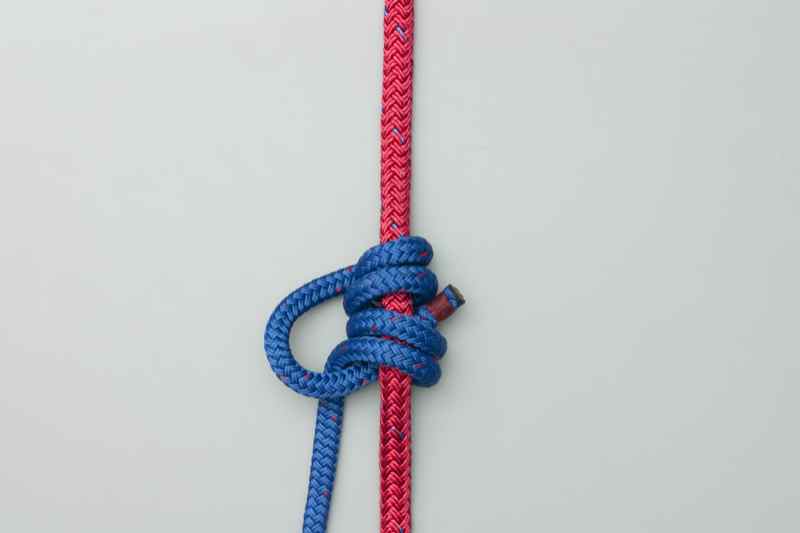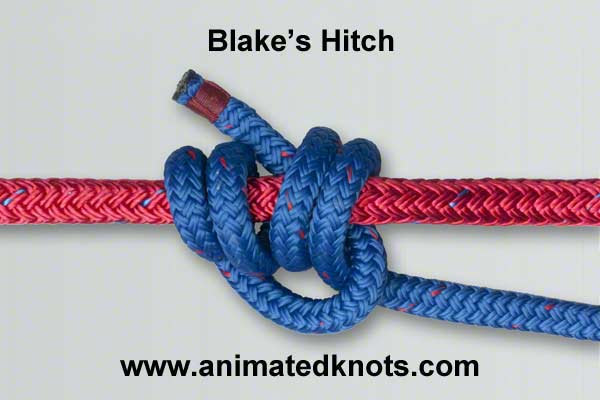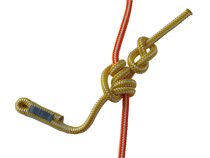Blake's hitch
The Blake node is a terminal node, which is common in the rope-assisted tree climbing. Although he attaches securely, it is often secured with a stopper knot.
History
The node was first presented in 1981 by Heinz Prohaska. He called the node inserted node winding or coil tucked hitch. In 1990, he showed him a second time in the cave climber magazine Nylon Highway # 30 Separately presented Jason Blake node 1994 a letter to the magazine Arborist Tree Climbing the World World before. The node was henceforth spread hitch in professional circles as Blake's and gained notoriety under this name.
Application
The node can be used to climb and descend the climbing rope.
When climbing action of Blake node is partially used for clamping of banners and the like. In this case the free end is guided through an eyelet and is wound around the first part of the node of the rope. In this way may be simpler than, for example tensioned with the butterfly knot.
Tie
Times Wrap the loose end of three and a half to six and a half to the climbing rope. Then run along the end in the first two windings on the climbing rope and pull out between the second and the third winding. Taking a stopper knot on the end and tighten it close to the windings.
In practice, it is helpful to wrap the thumb in the first two windings, later to be able to thread the end easier.
In the picture in the infobox is drawn as a stopper knot, a simple overhand knot. A better choice is a Endacht (also eight knot, see drawing right) because this node is easier to untie.
If the node does not hold because of a slippery safe climbing rope, a further winding should be added. The end is still tucked under the last two windings. If the " winding rope" does not hold good, because it eg is too rigid, it should still attached a further winding and the end pinched underneath. For more " attack surface " is achieved, which can clamp the support cable better.
Alternatives
- When climbing the Prusikschlinge used.
- In the maritime field is used with a rope strand of Stopperstek.
- With a sling and the FB- band terminal nodes.
- Rarely, the cross clamping nodes.
- If the carbine serve as a handle, must be a " blocker " are wrapped with an accessory cord around the rope. The carbine is performed only on the first and last eye.
Similar nodes
- Hitch # 1740 Ashley book of knots
- Hitch # 1470 in the Ashley Book of knots
- Topsegelschotstek
- Tarbuckknoten
- Hitch # 1740
- Topsegelschotstek
- Tarbuckknoten loop
- Stopperstek









